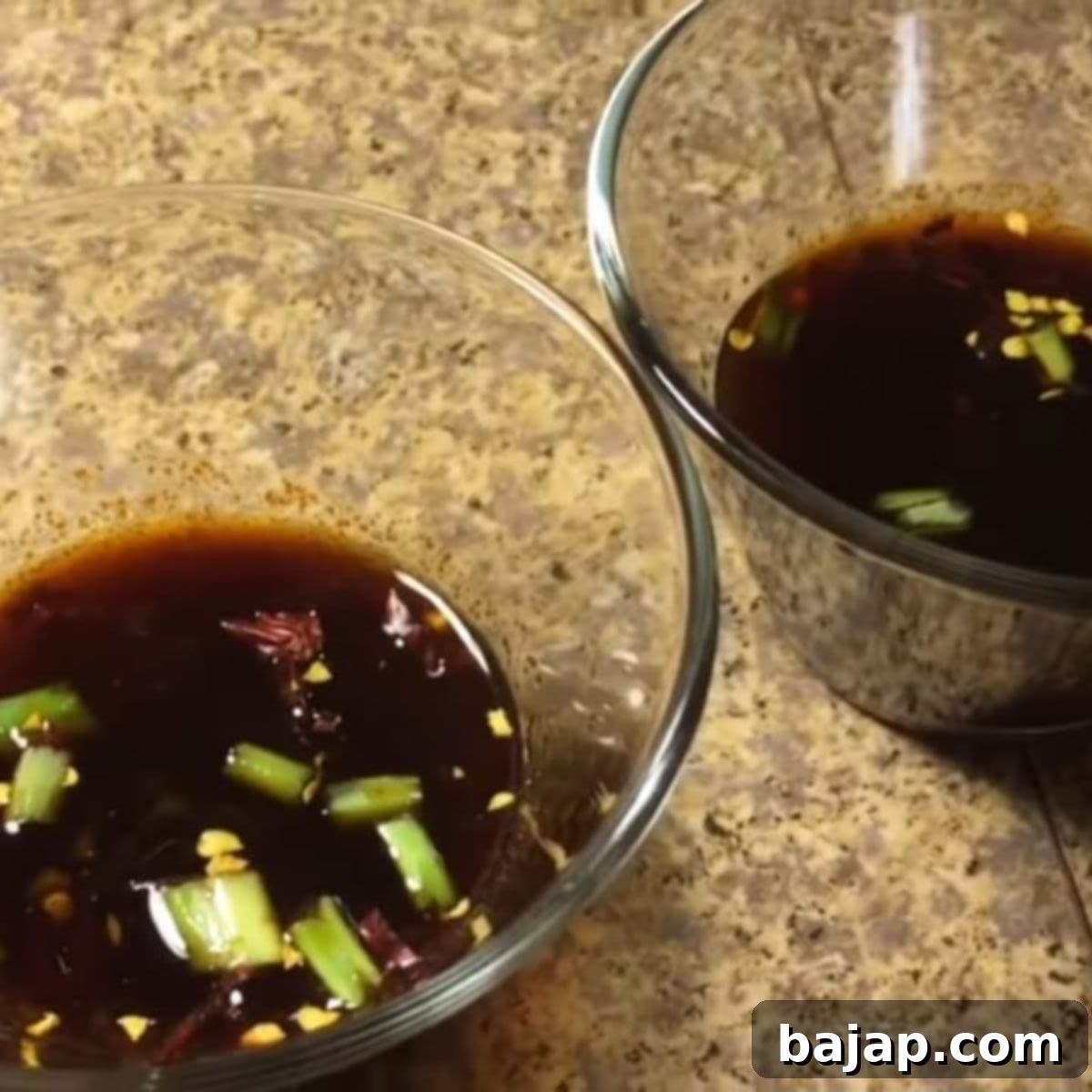The Best Homemade PF Chang’s Style Potsticker Dipping Sauce Recipe
Are you ready to transform your ordinary potstickers into an extraordinary culinary experience? A perfectly crafted dipping sauce is the secret ingredient that elevates these delightful dumplings from good to gourmet. While store-bought options exist, nothing compares to the vibrant, balanced flavors of a homemade potsticker sauce. Our recipe delivers a unique blend of tangy, salty, and subtly sweet notes, infused with a refreshing ginger zing and a customizable kick of chili – reminiscent of your favorite PF Chang’s restaurant sauce!
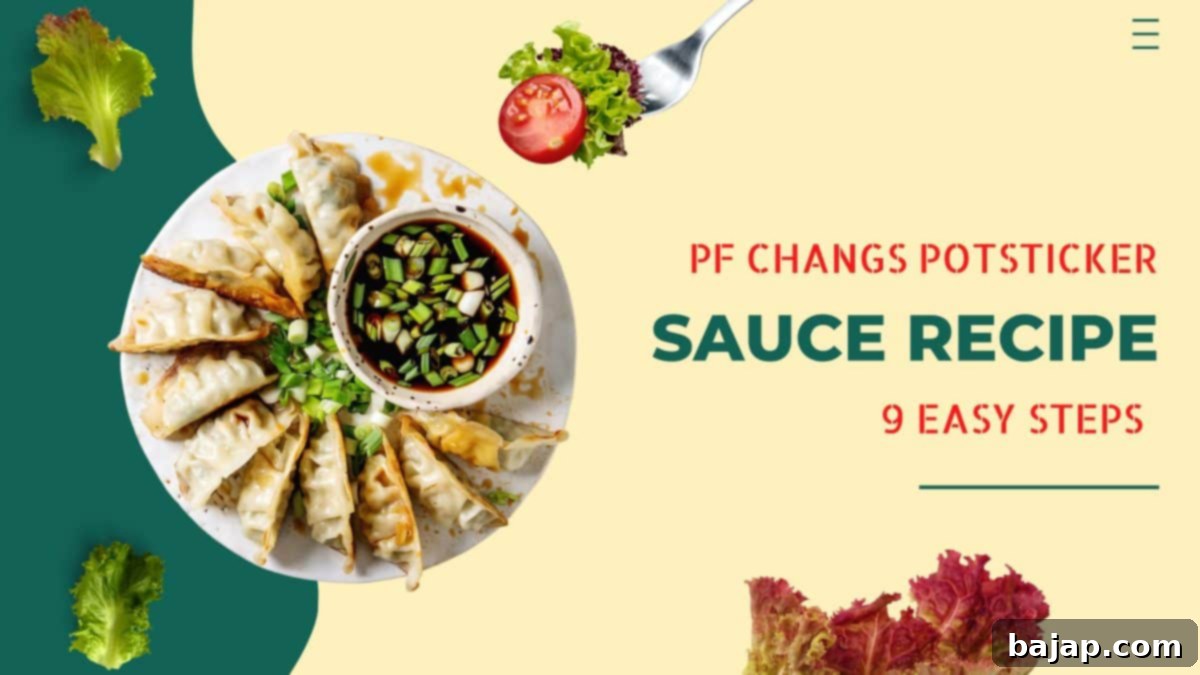
This versatile dipping sauce is not just for potstickers! We frequently serve it to our guests with a variety of appetizers, including dumplings, spring rolls, egg rolls, and even as a delicious glaze for grilled chicken or tofu. It truly makes any dish incomparably delicious. The best part? You don’t need to spend a fortune at a restaurant or on exotic ingredients. With just a few simple pantry staples, you can recreate this fantastic PF Chang’s style potsticker sauce right in your own kitchen in under 30 minutes.
In this comprehensive guide, we’ll share our perfected potsticker dipping sauce recipe, providing clear, step-by-step instructions that anyone can follow. Whether you’re a seasoned chef or a beginner in the kitchen, you’ll find this recipe straightforward and rewarding. So, let’s gather our ingredients and get ready to add an incredible burst of flavor to your next meal!
This potsticker sauce recipe is designed to be simple, healthy, and incredibly flavorful, making it perfect for a quick weeknight meal or an impressive addition to a dinner party. We encourage everyone to try it – from novice cooks to culinary experts. Simply follow all the detailed steps, and prepare to delight your taste buds!
A yummy guest post, written by Eleanor. Thank you so much! 💚
🥘 Essential Ingredients for the Perfect Potsticker Sauce
Crafting a truly exceptional potsticker sauce starts with selecting the right ingredients. Each component plays a crucial role in building the layered flavors of sweet, savory, tangy, and spicy that make this sauce so irresistible. Here’s what you’ll need:
- Soy Sauce: The foundation of our sauce, providing a deep, umami-rich base.
- Sugar: Balances the savory and tangy notes, adding a touch of sweetness.
- Apple Cider Vinegar: Delivers the essential tangy “zing” and brightens the overall flavor profile.
- Ginger Paste: Offers a fresh, aromatic warmth and pungent kick, vital for authentic Asian flavors.
- Red Chilies: Provides fresh, vibrant heat and a beautiful color.
- Cayenne Pepper: An optional addition for those who love an extra layer of lingering spice.
For precise quantities and a printable version, please refer to the recipe card below.
🔪 Step-by-Step Instructions: Crafting Your Delicious Potsticker Sauce
9 Easy Steps To Prepare a Flavorful Potsticker Dipping Sauce.
Step 01: Begin with a Soy Sauce Base: The backbone of this incredible dipping sauce is high-quality soy sauce. Pour 15 ounces (approximately 1¾ cups) of soy sauce into a mixing bowl. This amount is carefully chosen to provide a deep, umami-rich foundation for the sauce. While maintaining this quantity is recommended for optimal balance, you have the option to use low-sodium soy sauce if you are mindful of your salt intake. This crucial first ingredient sets the stage for all the complex and harmonious flavors that will follow.
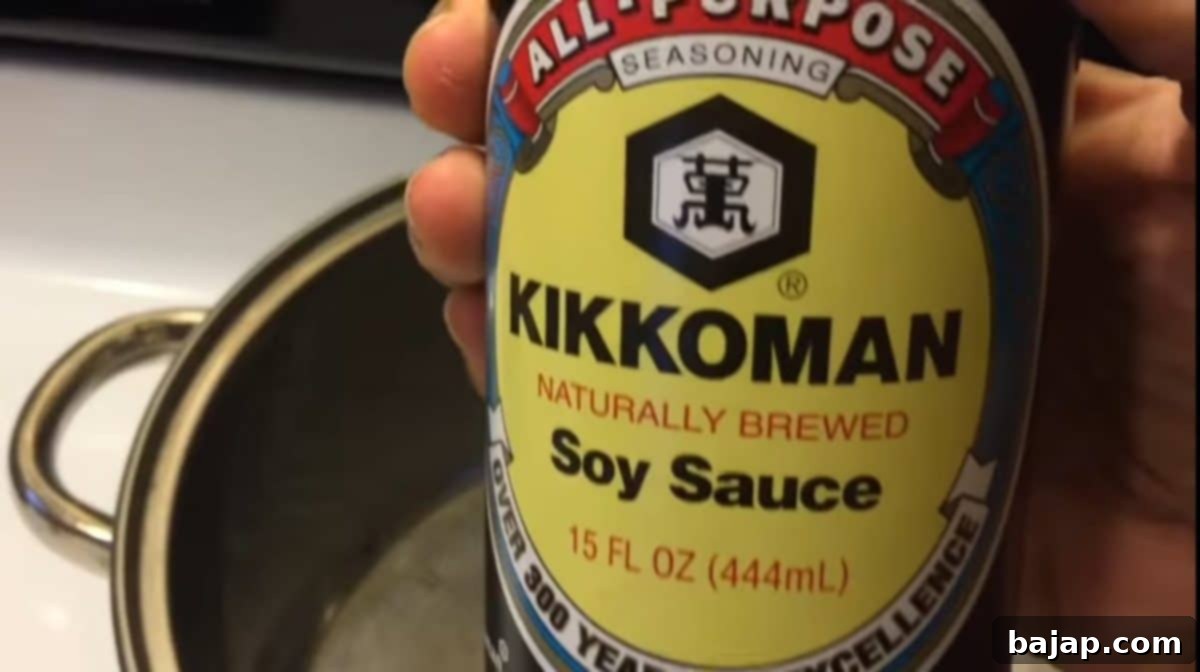
Step 02: Introduce Sweetness with Sugar: Now, it’s time to balance the savory soy sauce with a touch of sweetness. Add one cup of sugar to the bowl. This amount is generally sufficient to achieve a well-rounded flavor, but you have the flexibility to adjust it according to your personal taste. You can choose between brown sugar, which offers a richer, slightly caramel-like depth, or white granulated sugar for a clean, straightforward sweetness. If you have any health considerations or prefer a more robust flavor, brown sugar can be a great option. Remember, the goal is to create a harmonious blend, so taste and tweak as needed.
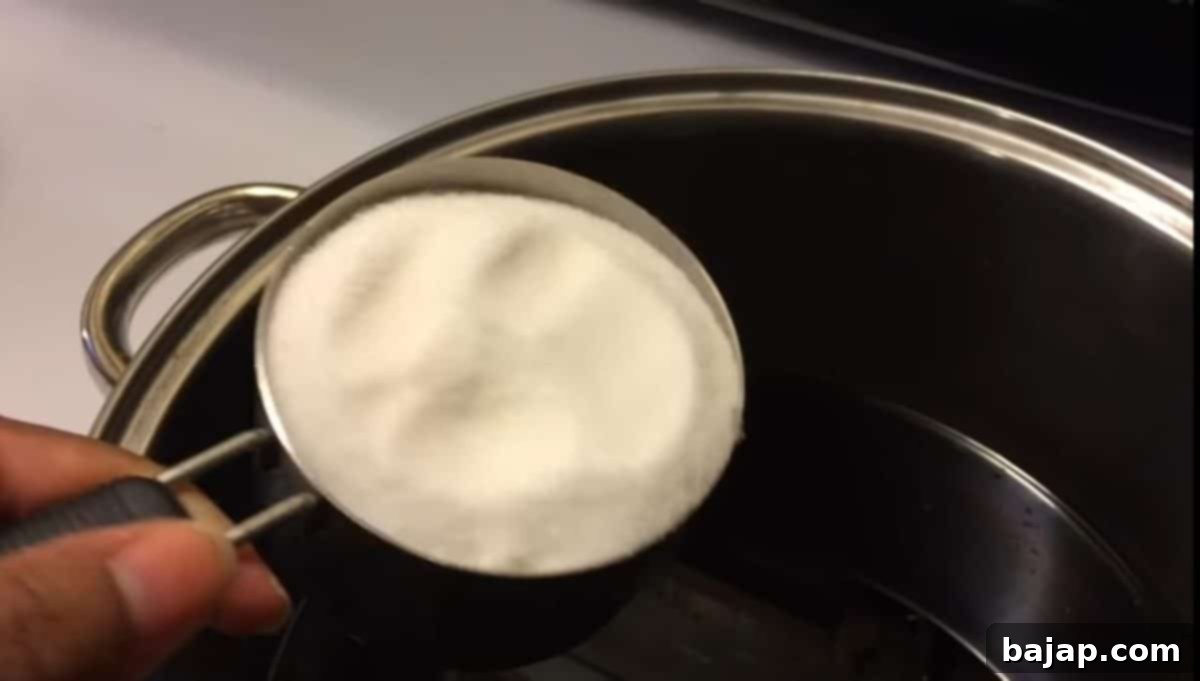
Step 03: Achieve Tangy Perfection with Apple Cider Vinegar: For that characteristic tangy “zing” that makes this sauce truly special, incorporate one cup of apple cider vinegar. This ingredient is pivotal in providing a bright, acidic counterpoint to the richness of the soy and the sweetness of the sugar. While white vinegar can serve as a substitute if apple cider vinegar isn’t available, we highly recommend using apple cider vinegar for its fruitier, more nuanced flavor. It will impart a superior tangy taste that is essential for this recipe. You can easily find apple cider vinegar at any local supermarket.
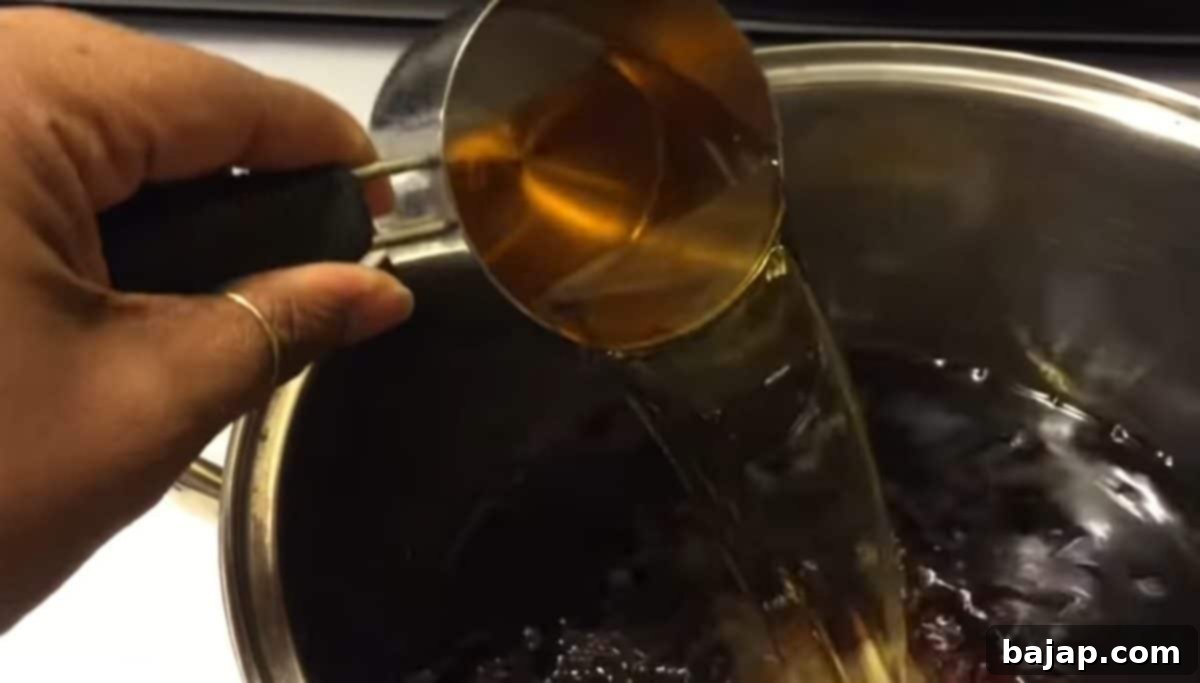
Step 04: Infuse with Aromatic Ginger Paste: Now, it’s time to add a burst of fresh, pungent flavor with ginger. Incorporate one cup of ginger paste into your mixture. For the most vibrant and authentic taste, we strongly recommend using fresh ginger root. Start by peeling the ginger, then finely grate or mince it to create a smooth paste. This method ensures you extract the maximum flavor and aroma. If fresh ginger is not an option, you can use high-quality ground ginger, but be aware that its flavor is more concentrated, so you might need to adjust the quantity. Feel free to add more or less ginger based on your personal preference for its warming spice.
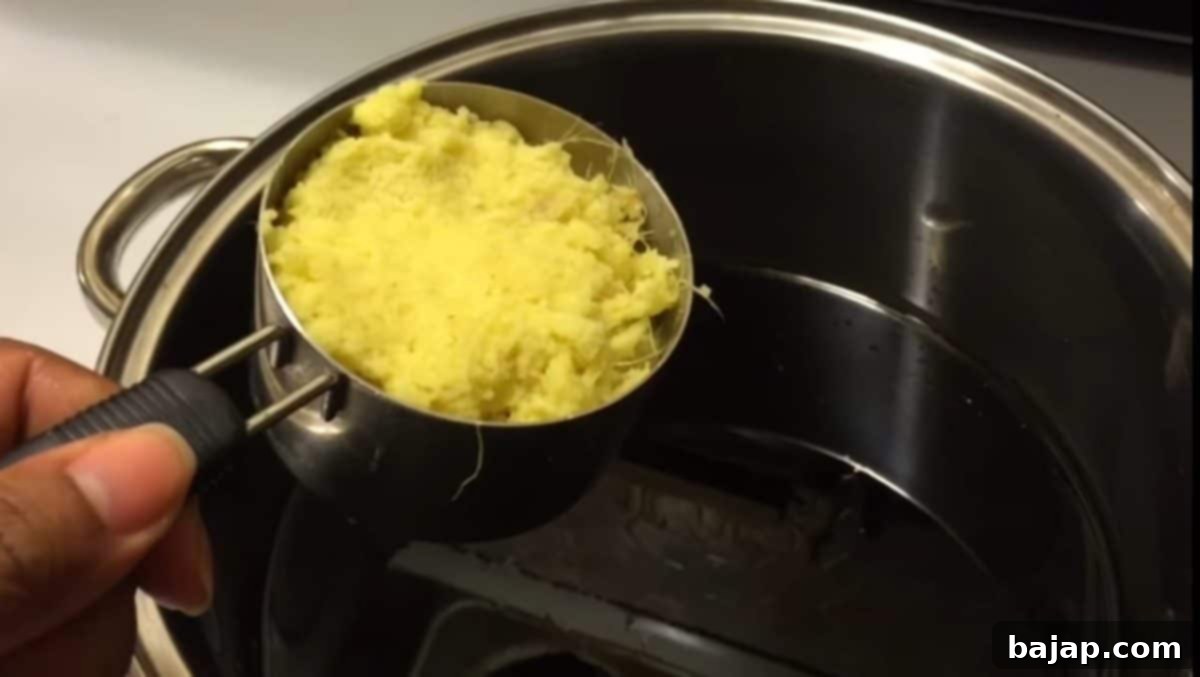
Step 05: Add Fresh Red Chilies for Spice: To introduce the desired level of heat and a beautiful visual element, add 5-6 pieces of fresh red chilies. The type of chilies you choose (e.g., Serrano, Thai bird, or even milder options like Fresno) will significantly influence the spice level. This step offers excellent customization: use more chilies if you love spicy food, or fewer if you prefer a gentler warmth. For families with varying spice tolerances, it’s always a good practice to start with a smaller quantity of chilies and gradually add more until the perfect heat is achieved. Remember to finely chop or mince them for even distribution of flavor.
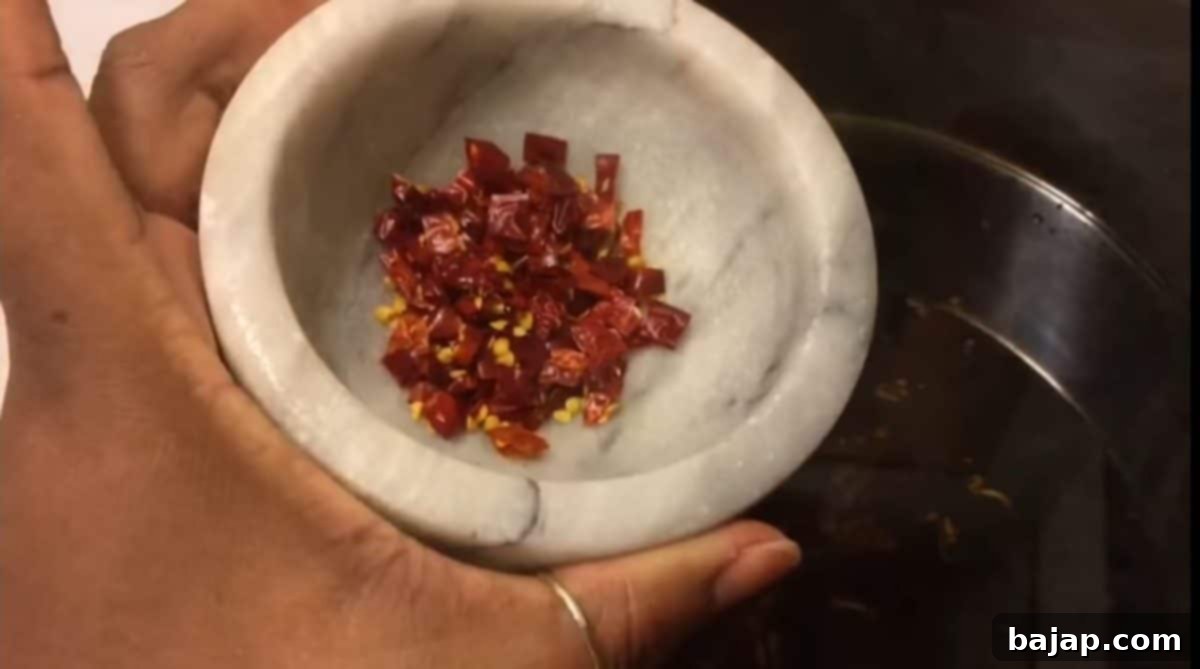
Step 06: Cayenne Pepper – An Optional Spice Boost: (Optional Step) For those who crave an extra layer of warmth and a lingering heat, consider adding two teaspoons of cayenne pepper. This ingredient brings a different kind of spice profile compared to fresh chilies, offering a more powdered, sustained burn. It’s crucial to exercise caution with cayenne pepper, as adding too much can quickly make the sauce overpoweringly spicy. If you prefer a milder sauce or are serving guests with varying heat preferences, feel free to skip this optional step entirely. For true spice lovers, however, it will be a fantastic addition.
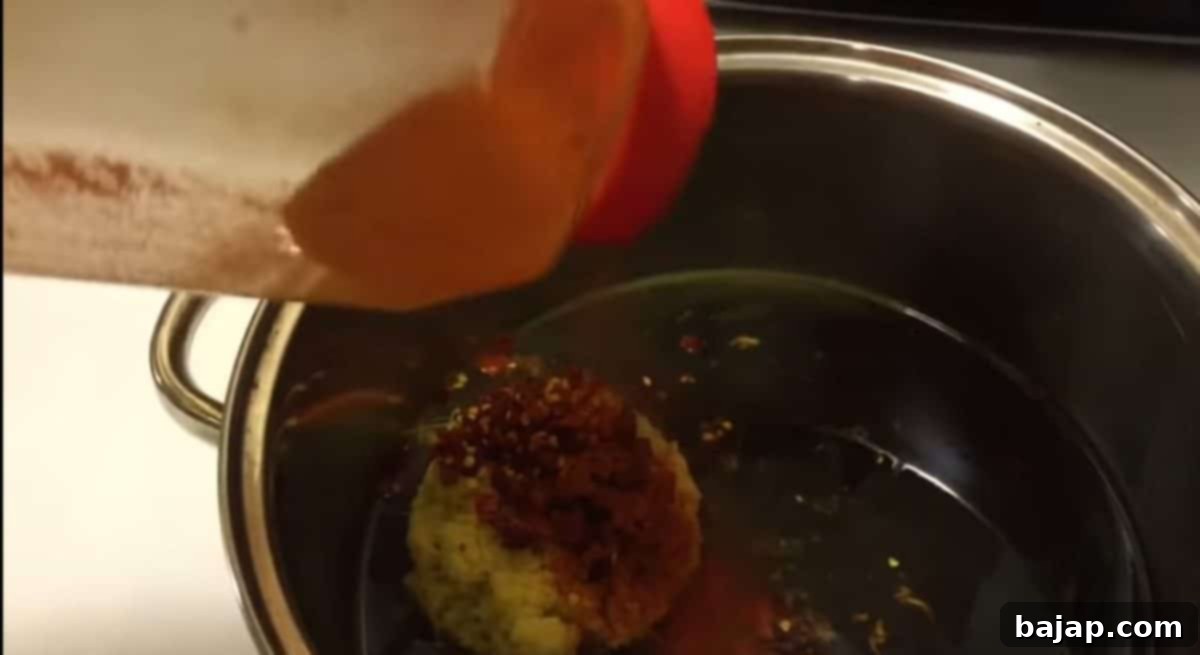
Step 07: Stir Your Sauce Thoroughly: With all the core ingredients now in the bowl, your sauce is almost ready to be cooked. Before applying heat, give it a really good stir. Proper and vigorous stirring is paramount to ensure that all the sugar fully dissolves and that every single ingredient is perfectly incorporated and evenly distributed throughout the mixture. This is also an excellent opportunity to perform an initial taste test. Take a small spoonful and check for balance – does it need more sweetness, more tang, or a touch more spice? Adjust as necessary before moving to the next step.
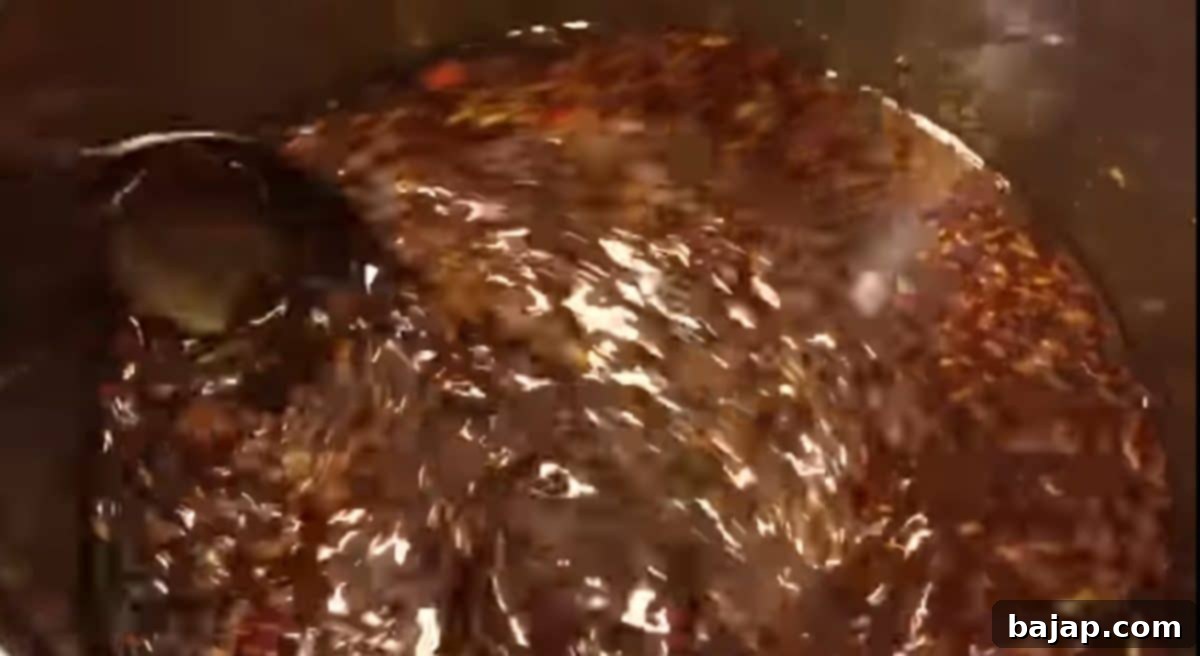
Step 08: Rapid Boil and Gentle Simmer: To achieve a perfect consistency and allow the flavors to truly meld and deepen, the sauce needs to be cooked. Transfer your mixture to a saucepan and bring it to a rapid boil over medium-high heat. Once it reaches a vigorous, rolling boil, immediately reduce the heat to low. Allow the sauce to gently simmer for approximately 10 minutes. This simmering process is crucial; it helps to slightly reduce the sauce, concentrating its flavors and developing a richer taste. After 10 minutes, turn off the heat and let the sauce cool down completely. It will thicken further as it cools.
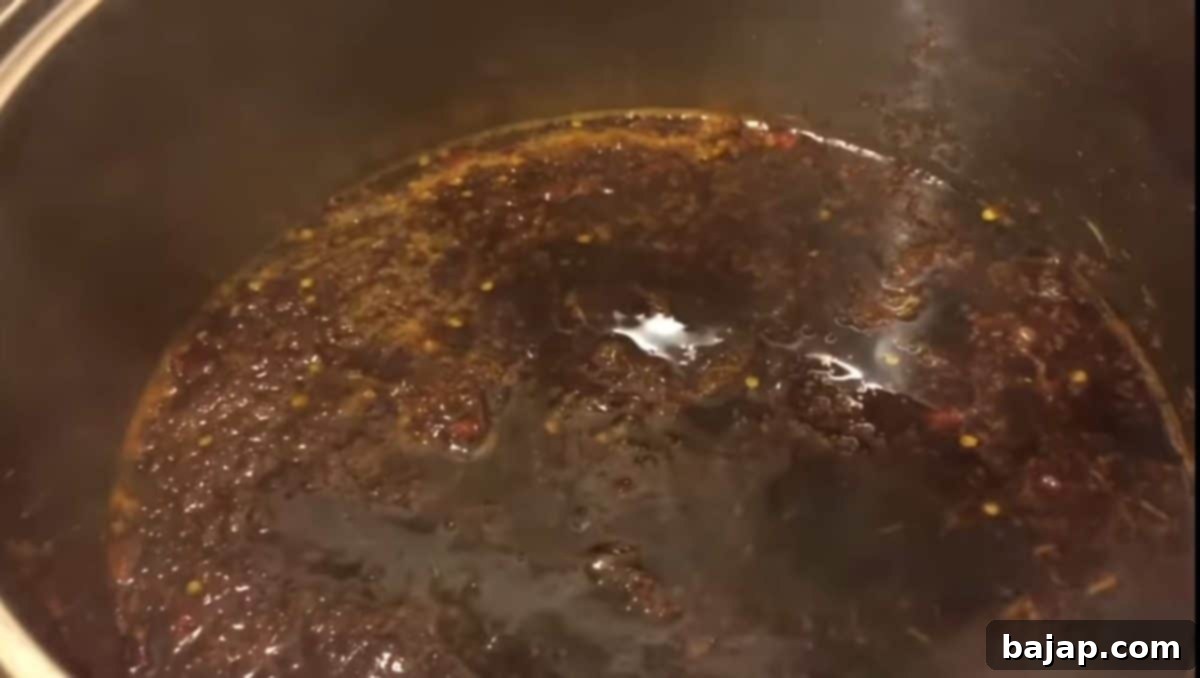
Final Step: Taste, Serve, and Store: Your homemade potsticker sauce is now complete and ready to enjoy! Once it has cooled to room temperature, give it a final taste. This is your last chance to make any minor adjustments to sweet, sour, or spicy notes. Carefully transfer the sauce into an airtight jar or container. Stored properly in the refrigerator, this delectable sauce will remain fresh and flavorful for up to two weeks, making it perfect for meal prep. Serve it generously with your favorite potstickers, egg rolls, spring rolls, wontons, or even as a unique dressing for salads or noodles. Enjoy your homemade creation!
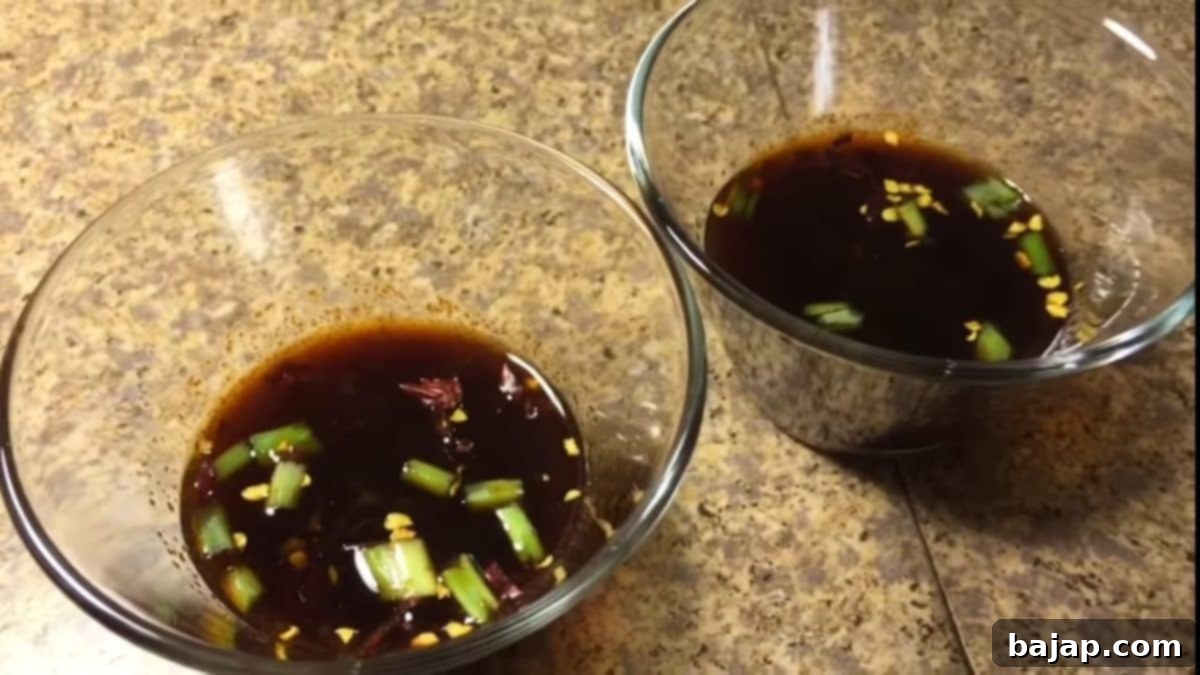
These nine steps are designed to be incredibly easy to follow, ensuring that even a complete beginner can create a truly exceptional dipping sauce. Don’t hesitate to give it a try – the results are well worth the minimal effort! So, what are you waiting for? Dive into your kitchen today and enjoy the incredible flavors of your homemade potsticker sauce.
💭 Pro Tips for Customizing Your Potsticker Sauce
While the ingredients outlined above form the perfect base for our delicious potsticker sauce, there are many ways to customize it to your liking. Here are some ‘top tips’ for additions and considerations for what to avoid, allowing you to fine-tune the flavor and texture to your preference:
Flavorful Additions to Enhance Your Sauce:
(i) Fresh Aromatics: Elevate the complexity by adding finely minced green onions or fresh garlic. Green onions provide a mild, refreshing pungency, best stirred in after the sauce has cooled. Minced garlic, added during the initial mixing stage, will deepen the savory notes.
(ii) Nutty Aroma with Sesame Oil: A drizzle of toasted sesame oil at the very end, just before serving, adds an incredible nutty fragrance and a silky mouthfeel. A little goes a long way, so start with a small amount and adjust to taste.
(iii) Sweetness with Honey: If you desire a slightly more complex sweetness or a glossier finish, you can substitute some of the sugar with honey. Honey introduces a unique floral note and can also help create a thicker, more syrupy consistency.
(iv) Thickening with Cornstarch: For a noticeably thicker sauce, prepare a cornstarch slurry by mixing 1 teaspoon of cornstarch with 1 tablespoon of cold water until smooth. Add this slurry gradually to the simmering sauce (Step 08), stirring constantly, until your desired thickness is achieved. Be cautious not to add too much, as it can quickly become overly thick.
What to Consider Avoiding (or Adjusting):
(i) Sugar Alternatives: If you have dietary restrictions or are managing health issues like diabetes, consider reducing the amount of sugar or replacing it with artificial sweeteners, honey, or even a natural sugar substitute like stevia or erythritol. Always taste and adjust to achieve balance.
(ii) Excessive Vinegar: While vinegar provides that essential tang, using too much can make your sauce overwhelmingly tart and acidic, masking other delicate flavors. Stick to the recommended amount or adjust cautiously to ensure a harmonious profile.
(iii) Over-Spicing: If you are serving family members or guests who are sensitive to heat, it’s always best to be conservative with red chilies and cayenne pepper. You can offer extra chili flakes on the side for those who prefer more spice, ensuring everyone can enjoy the sauce without discomfort.
🙋🏻 Frequently Asked Questions About Potsticker Dipping Sauce
Frozen potstickers are incredibly versatile and can be prepared in various delicious ways. The most popular methods include steaming, pan-frying (for crispy bottoms!), deep-frying, or even baking. To enhance their flavor significantly, always pair them with a delicious dipping sauce like this one. The sauce adds moisture, tang, and spice, making the potstickers incomparably more delicious. No matter your cooking method, a great potsticker sauce is the perfect complement, transforming a simple appetizer into a memorable dish.
While commonly referred to as “potsticker sauce” or “dumpling sauce,” this type of dipping condiment is also widely known as “Gyoza Sauce” in Japan, where gyoza are their version of pan-fried dumplings. In certain regions, or when specifically replicating restaurant flavors, it might be called “PF Chang’s sauce” due to the popularity of their version. Fundamentally, these sauces share similar core ingredients like soy sauce, vinegar, and sugar, often enhanced with aromatics like ginger and garlic, and a touch of chili for spice.
Absolutely! This homemade potsticker sauce is an excellent candidate for meal prepping. In fact, making it a day or two in advance often allows the flavors to meld and deepen even further, resulting in a more complex and harmonious taste. Just store it in an airtight container in the refrigerator, and it will be ready to go when you need it.
Beyond potstickers and dumplings, this sauce is incredibly versatile! It makes a fantastic dipping sauce for spring rolls, egg rolls, and even fried wontons. You can also use it as a flavorful dressing for Asian-inspired salads, a marinade for chicken or tofu, or a drizzle over stir-fried noodles or rice bowls. Its balanced sweet, savory, and tangy profile makes it a delicious complement to a wide range of dishes.
To make your culinary moments even more enjoyable, we genuinely encourage you to try this homemade potsticker sauce at least once. Wherever you travel in Asian cuisine, you will find variations of this beloved dipping sauce, celebrated for its unique taste that almost everyone adores. So, don’t hesitate! Follow our simple steps and create your very own batch of this delicious, authentic sauce at home.
Before concluding, a crucial reminder: always prioritize fresh ingredients for the best possible flavor. Using fresh ginger, chilies, and good quality soy sauce will make a significant difference in the final taste of your sauce. Older or pre-prepared ingredients may not yield the same vibrant and robust flavors. Keep this in mind, and truly savor your meal!
Thank you for following along with this recipe! We’ve reached the final stage. If you believe we missed any details, or if you have any suggestions or personal twists on this recipe, please don’t hesitate to share them in the comment section below. We would genuinely love to hear from you and learn about your culinary experiences. Happy cooking!
📖 Recipe
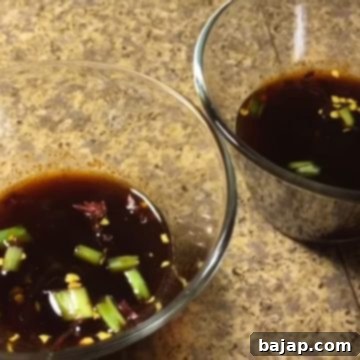
Homemade Potsticker Dipping Sauce (PF Chang’s Style)
Eleanor
Save RecipeSaved!
Pin Recipe
Equipment
-
1 Saucepan
-
1 Mixing Bowl
-
Whisk or Spoon
Ingredients
- 15 ounces Soy sauce
- 1 cup Sugar
- 1 cup Apple cider vinegar
- 1 cup Ginger Paste
- 6 pieces Red chilies
- 2 teaspoons Cayenne pepper (optional)
Instructions
-
Step 01: Begin with a Soy Sauce Base: Pour 15 ounces (approx. 1¾ cups) of soy sauce into a mixing bowl. This amount is crucial for the deep, umami-rich foundation of the sauce. You can opt for low-sodium soy sauce if preferred.15 ounces Soy sauce
-
Step 02: Introduce Sweetness with Sugar: Add one cup of sugar to the bowl. You can use brown sugar for a richer depth or white sugar for pure sweetness. Adjust the amount to your personal taste.1 cup Sugar
-
Step 03: Achieve Tangy Perfection with Apple Cider Vinegar: Add one cup of apple cider vinegar for the signature tangy “zing.” Apple cider vinegar provides a brighter, more nuanced flavor than white vinegar, which can be used as a substitute if necessary.1 cup Apple cider vinegar
-
Step 04: Infuse with Aromatic Ginger Paste: Incorporate one cup of ginger paste. For best results, use fresh ginger root, peeled and finely grated. Adjust quantity based on your preference for ginger.1 cup Ginger Paste
-
Step 05: Add Fresh Red Chilies for Spice: Add 5-6 pieces of finely chopped red chilies for heat. Customize the amount according to your desired spice level, adding more for fiery results or fewer for a milder sauce.6 pieces Red chillies
-
Step 06: Cayenne Pepper – An Optional Spice Boost: (Optional Step) For extra heat, add two teaspoons of cayenne pepper. Use with caution, as it can make the sauce very spicy. Skip this step if you prefer a milder sauce.2 teaspoons Cayenne pepper
-
Step 07: Stir Your Sauce Thoroughly: Stir all ingredients vigorously in the bowl until the sugar is completely dissolved and the mixture is uniform. Taste and adjust seasonings as needed before cooking.
-
Step 08: Rapid Boil and Gentle Simmer: Transfer the mixture to a saucepan. Bring to a rapid boil over medium-high heat, then reduce heat to low and simmer gently for 10 minutes. This process deepens flavors and slightly thickens the sauce. Remove from heat and let cool.
-
Final Step: Taste, Serve, and Store: Once cooled, taste the sauce and make any final adjustments. Store in an airtight jar in the refrigerator for up to two weeks. Enjoy with potstickers, egg rolls, wontons, or as a versatile Asian dipping sauce.
Notes
- Proper Mixing is Key: Ensure all ingredients are thoroughly mixed, especially dissolving the sugar, for a balanced flavor profile.
- Don’t Over-Boil: Simmering for 10 minutes is sufficient to meld flavors and slightly thicken. Over-boiling can make the sauce too concentrated or alter its delicate balance.
- Balance the Spice: Be mindful of the amount of fresh chilies and cayenne pepper. Too much can make the sauce overly bitter or unpalatably spicy for some. Always taste and adjust gradually.
- Storage: Store the cooled sauce in a clean, airtight container in the refrigerator for up to 2 weeks.
Nutrition values are estimates only, using online calculators. Please verify using your own data.

🤎 You might also like these flavorful recipes:
If you enjoyed crafting this delicious potsticker sauce, you might be interested in exploring more of our homemade condiment and appetizer recipes:
- How to Make Delicious Homemade Chive Sauce in 5 Minutes
- How to Make Apfelkren – Austrian Horseradish Sauce
- Bacon Wrapped Venison Tenderloin Recipe
- Authentic Austrian Liptauer Cheese Spread Recipe
⛑️ Important Food Safety Guidelines
Ensuring food safety is paramount when preparing any meal. Please keep these essential guidelines in mind for a safe and enjoyable cooking experience:
- Always cook food to a minimum internal temperature of 165 °F (74 °C) to eliminate harmful bacteria.
- Prevent cross-contamination by never using the same utensils on cooked food that previously touched raw meat or poultry.
- Thoroughly wash your hands with soap and warm water before and after handling raw meat and other ingredients.
- Avoid leaving cooked food sitting out at room temperature for extended periods, as this can encourage bacterial growth. Refrigerate promptly.
- Never leave cooking food unattended, especially when simmering or boiling, to prevent accidents and ensure proper cooking.
- When frying or sautéing, use cooking oils with a high smoke point to avoid breaking down and forming harmful compounds.
- Always ensure good ventilation in your kitchen when using a gas stove or high heat cooking methods.
For further comprehensive information on safe food handling practices, please refer to the official guidelines from Safe Food Handling – FDA.
